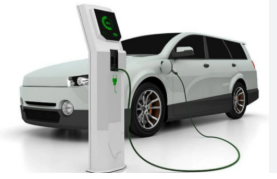Introduction
Canada’s EV sector has been on a slow but steady rise. But recent U.S. policy changes are threatening that progress. The U.S. government’s decision to cancel key federal EV tax credits has sent ripples across North America—and the Canadian EV market could be collateral damage.
This policy shift not only affects American buyers but also reshapes the economic environment for Canadian automakers, parts suppliers, and EV consumers.
🇺🇸 What’s Happening with the U.S. EV Tax Credit?
In a controversial move, the U.S. has decided to roll back its $7,500 EV tax credit—a key incentive that fueled electric vehicle sales. The new law, backed by certain oil-friendly lobby groups and politicians, imposes stricter domestic manufacturing requirements, essentially cutting off credits for many foreign-made EVs, including those made in Canada.
While this may be aimed at promoting “Made in America”, it has serious unintended consequences for Canada’s EV ecosystem.
🇨🇦 Why Canada Is Caught in the Crossfire
The U.S. and Canadian auto industries are deeply integrated. Over 75% of Canadian-made vehicles are exported to the U.S., and a large number of components flow back and forth across the border. So when U.S. policies change, Canada feels the heat.
Canadian automakers and battery suppliers, some of whom were counting on U.S. EV demand, are now being left in limbo.
5 Major Impacts on the Canadian EV Market
1. Declining Cross-Border Sales
Canadian manufacturers exporting to the U.S. may now face reduced demand due to the lack of tax incentives for their EVs. This hits small and mid-size automakers the hardest.
2. Job Losses in the Auto Sector
With U.S. EV demand slowing down, Canadian assembly plants and battery factories could see layoffs or production halts.
3. Reduced Investment in EV Innovation
Foreign investors may now hesitate to fund EV projects in Canada, seeing the U.S. market as unstable or protectionist.
4. Pricing Pressure on Canadian EVs
With fewer incentives and rising costs, Canadian EVs may struggle to compete on price with their U.S.-built counterparts.
5. Slowdown in Canadian EV Adoption
Less spillover from U.S. EV success means Canadian consumers may face limited model options, higher prices, and longer wait times.
What This Means for Automakers & Buyers
The ripple effect is real. EV leaders like Ford, GM, and Stellantis, which operate major facilities in Ontario, may shift more production to the U.S. to qualify for future incentives.
Consumers, on the other hand, may now feel discouraged from going electric—especially as Canadian EV incentives have also been inconsistent over the years.
Unless Canada responds with its own robust EV policies, the Canadian EV market risks falling behind in the global race.
Frequently Asked Questions (FAQs)
Q1: Why does the U.S. EV tax credit affect Canada?
Because Canadian EVs and components are heavily exported to the U.S., policy changes there directly impact the Canadian EV market.
Q2: Will Canadian EV incentives offset the loss?
Not entirely. While federal and provincial incentives exist, they are often smaller and less consistent than U.S. credits.
Q3: Which Canadian automakers are most affected?
OEMs like Ford and GM with operations in Ontario may see reduced U.S. demand for Canadian-assembled EVs.
Q4: How is the Canadian government responding?
The response so far has been muted, but pressure is growing for matching policies and more investment in domestic EV infrastructure.
Q5: Can this decision slow down EV adoption in Canada?
Yes. Higher prices, fewer choices, and uncertain policy support may discourage Canadian consumers from switching to EVs.
Conclusion
The Canadian EV market is being swept into a policy storm it didn’t create. While the U.S. seeks to localize its EV supply chain, the fallout north of the border is real and immediate. For Canada to stay competitive in the electric future, urgent action is needed—incentives, investment, and strategic clarity.
Otherwise, what started as U.S. policy protectionism could become a North American EV crisis.

